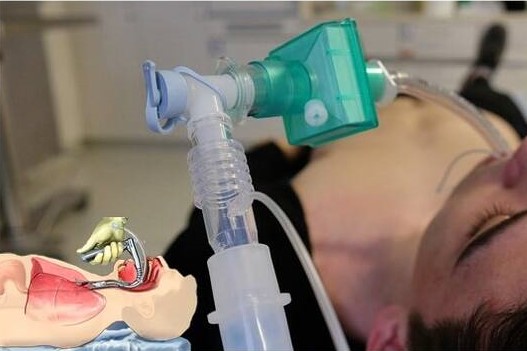
Endotracheal intubation: what is VAP, Ventilator-associated pneumonia
The acronym Vap stands for ventilator-associated pneumonia, a nosocomial infection that occurs approximately 48-72 hours after endotracheal intubation in patients admitted to the ICU
It is the leading cause of death among critically ill patients with a higher mortality rate than other nosocomial infections estimated at between 24% and 50%.
It is the result of the invasion of micro-organisms present in the oro-pharyngeal cavity at the time of intubation that are carried towards the bronchi where, thanks to the favourable environment, they proliferate and then reach the lung parenchyma causing a local inflammatory reaction.
Specifically, this infection is therefore not attributable to the ventilator, but to the presence of the endotracheal tube or tracheostomy and the sedation required to keep the patient intubated, as these devices inhibit the cough reflex, thus facilitating bacterial colonisation and not allowing the release of the bacteria that lurk in the secretions already present before intubation and are carried towards the lung parenchyma during the manoeuvre.
The most commonly encountered bacterial species in VAP :
- Enterobacteriaceae ( 25%)
- Staphylococcus aureus ( 20%)
- Pseudomonas aeruginosa ( 25%)
- Haemophilus influenza ( 10%)
VAP, like most nosocomial infections, are becoming increasingly antibiotic resistant, especially those linked to Gram Negatives
Risk factors can be classified into modifiable (non-patient related) and non-modifiable (patient related), the nurse must play an active role in reducing modifiable risk factors by acting on the prevention of their occurrence.
Read Also:
Emergency Live Even More…Live: Download The New Free App Of Your Newspaper For IOS And Android
UK / Emergency Room, Paediatric Intubation: The Procedure With A Child In Serious Condition
Tracheal Intubation: When, How And Why To Create An Artificial Airway For The Patient
What Is Transient Tachypnoea Of The Newborn, Or Neonatal Wet Lung Syndrome?
Pneumonia: Causes, Treatment And Prevention
Pneumothorax And Pneumomediastinum: Rescuing The Patient With Pulmonary Barotrauma
Endotracheal Intubation In Paediatric Patients: Devices For The Supraglottic Airways
Sedation And Analgesia: Drugs To Facilitate Intubation
Anxiolytics And Sedatives: Role, Function And Management With Intubation And Mechanical Ventilation
Bronchitis And Pneumonia: How Can They Be Distinguished?
New England Journal Of Medicine: Successful Intubations With High-Flow Nasal Therapy In Newborns
Intubation: Risks, Anaesthesia, Resuscitation, Throat Pain
What Is Intubation And Why Is It Done?



